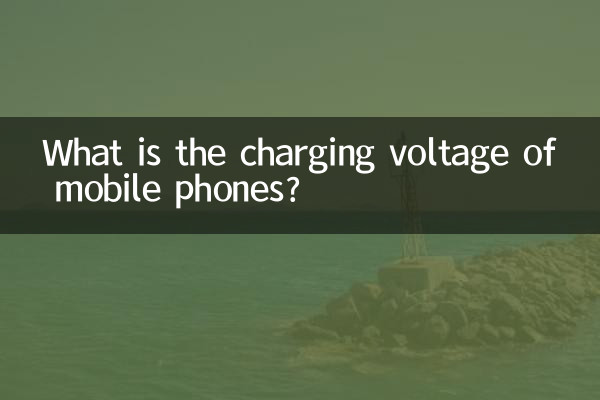What is the charging voltage for mobile phones? Revealing the secrets of fast charging technology and safety guide
With the popularity of smartphones, charging technology has become the focus of users' attention. Recently hot topics across the Internet include fast charging protocols, battery health, and charging safety. This article will focus on“What is the charging voltage for mobile phones?”This core issue is analyzed in detail for you by combining structured data and hot content.
1. Common range of mobile phone charging voltage

The charging voltage of mobile phones is not a fixed value, but is dynamically adjusted according to the charging protocol and device model. The following is a comparison of the voltage ranges of mainstream charging technologies:
| Charging protocol | Typical voltage range | Applicable scenarios |
|---|---|---|
| USB standard charging (5V) | 5V | Old mobile phones, basic charging |
| Qualcomm Quick Charge (QC) | 5V-20V | Compatible with multi-brand fast charging |
| USB Power Delivery (PD) | 5V-48V | Laptops, high-end mobile phones |
| OPPO VOOC/OnePlus Dash | 5V (low voltage and high current) | OPPO/OnePlus exclusive fast charge |
2. Recent hot topics: disputes between fast charging technology and users
1."Fast charging of mobile phones damages the battery" sparks discussion: Some users have reported that battery loss accelerates after long-term use of high-voltage fast charging. Experts recommend avoiding full charging for long periods of time.
2.EU unified charging interface policy: From 2024, the USB-C interface will be mandatory to promote the PD protocol to become mainstream and have wider voltage compatibility.
3.Domestic manufacturers break through 200W fast charging: According to laboratory data from iQOO and other brands, it can be fully charged within 10 minutes, but the actual voltage needs to be dynamically adjusted to ensure safety.
3. How to choose a safe charging voltage?
1.View device specifications: The mobile phone manual or official website will indicate the supported charging protocols (such as PD 3.0, QC 4+).
2.Priority to original charger: If the voltage of a third-party charger is unstable, it may cause overheating or damage.
3.Avoid mixing fast charging protocols: For example, using a Huawei SCP charger to charge a Xiaomi phone may trigger 5V "slow charging".
| brand | Typical fast charging voltage | Compatible protocol |
|---|---|---|
| Apple iPhone | 9V (PD protocol) | USB-PD |
| Samsung Galaxy | 9V/15V (PPS) | PD, QC |
| Huawei | 10V (SCP protocol) | FCP/PD |
4. Charging safety tips
1.temperature control: If the temperature of the mobile phone exceeds 40°C during charging, use should be suspended.
2.Avoid charging overnight: Most mobile phones will automatically reduce the voltage to 5V maintenance state after being fully charged, but this may affect battery life for a long time.
3.Check accessories regularly: Worn data cables may cause voltage fluctuations and are recommended to be replaced annually.
Conclusion
The charging voltage of mobile phones has developed from the traditional 5V to the current fast charging technology of up to 20V or more. Users need to make reasonable choices based on their device needs. Recently, the industry is moving towards unified protocols and high efficiency, but safety is always the first principle. If you still have questions about charging technology, you may wish to refer to the manufacturer's guide or professional evaluation data.

check the details

check the details